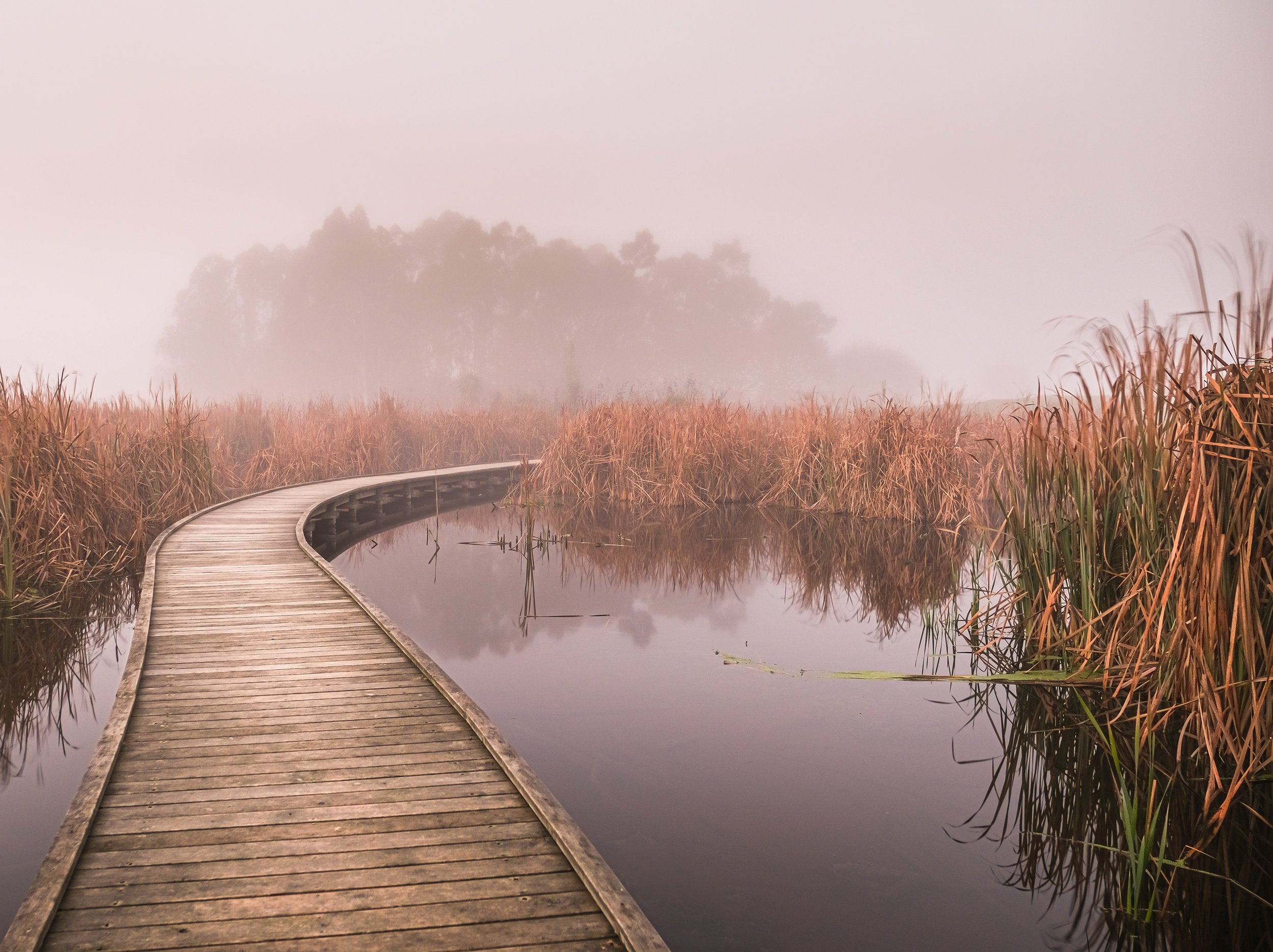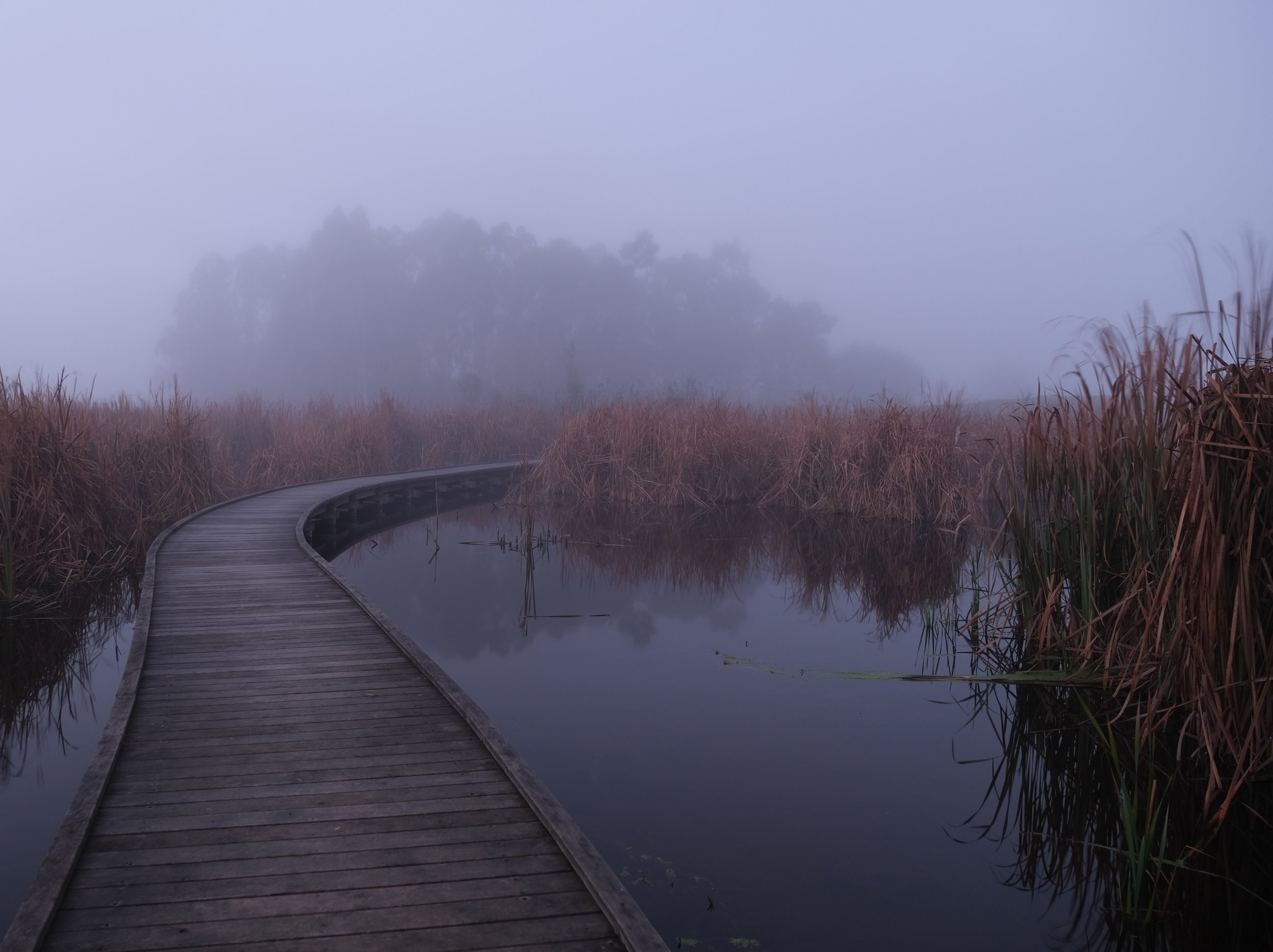Why we don't shoot and edit jpegs / Why don't we shoot and edit jpegs?
I edited and published the photo above recently. It was a shot I took a few weeks ago at the Peka Peka Wetlands just south of Hastings in Hawke’s Bay.
I thought it would be a good shot to write a blog about, and show the before and after of the shot, and to show just how much the look and feel of an image can be changed in post processing to create the look that actually existed on the day.
Below is the image straight out of the camera.
The scene in front of me at the time I shot this did not look like this image above.
There are many reasons why camera struggle to get the ‘feel’ of an image correct in camera. The main reason is that cameras are designed to capture an image of an ‘average’ situation correctly ( ie good daylight and good contrast ), which normally means they struggle when the scene being captured is not normal, such as a dull misty winters morning about 1/2 hour before sunrise.
And this is the main reason why the world of post processing images exists: cameras do not always get the photo looking right without additional help from a human brain.
And for this reason most online guides, and so called experts, will insist that the way to get your images looking the way the scene looked on the day, or to create the ‘feel’ in the image that you want to portray, is to shoot photos in RAW, ditch the image that the camera creates, and create a new jpeg image for sharing using your editing software of choice.
The main reason for shooting a RAW file, they say, is to have all of the information that the camera captured at the time and to make it possible to get the image you want at the end of the post processing. I won’t go into the details of a RAW file vs a jpeg, except to say that RAW files contain a lot more information about the scene being captured, at least 60 times the amount of information..
But I thought it would be interesting to challenge that thinking, and rather than edit the RAW file from the camera I would intentionally throw away the additional data in the RAW file and process the straight out of camera (SOOC ) jpeg image to see if I could get that image to match the scene that I saw when I took the photo, with less effort.
And I thought it would be more of a challenge to edit an image that looked so different in tone and ‘punch’ to the scene I was trying to capture, such as the jpeg above.
As I said above the RAW files my Fujifilm cameras produce have at least 60 times the information contained in the jpeg that is produced in camera for the same shot, but I have always thought that most of that extra information was never used by the post processing software ( for most images ) when creating the final image, and effectively was wasted.
And while the amount of data in a RAW file is larger than the camera produces in a jpeg, there are some things that the camera adds to the jpeg that are arguably done better than you can add in post production ( such as noise reduction and sharpening ).
So I was confident that I was going to be editing an image that a better starting position than that provided by the RAW image.
For this image I imported the SOOC jpeg into Lightroom and tweaked the image to get the look and feel that recreated the scene at the time, and then exported using my normal process.
So below is my SOOC jpeg and the processed SOOC jpeg side by side so you can see the differences between them.
And just for the record I also edited the RAW file from this photo, but to get the same look that I got below took a lot more time and effort than I used to edit the jpeg.
So why don’t we edit jpegs? Just because ‘the experts’ say we shouldn’t? I say why not edit jpegs, if it gets the image you want at the end of the day.




